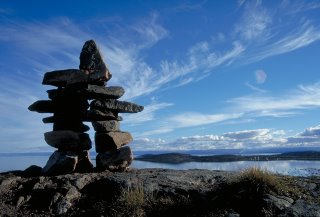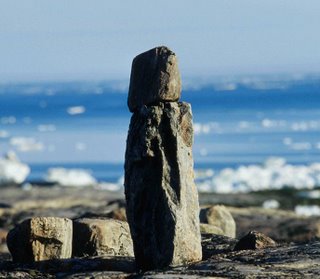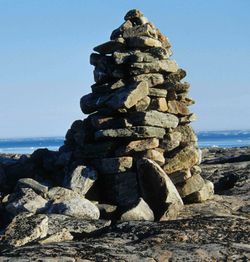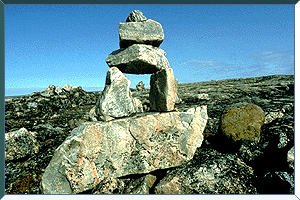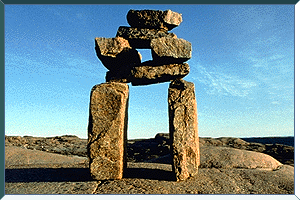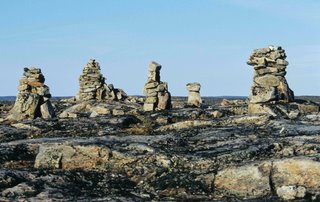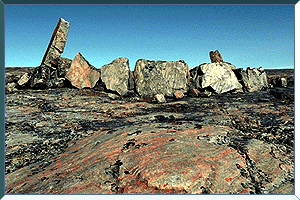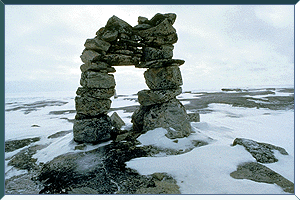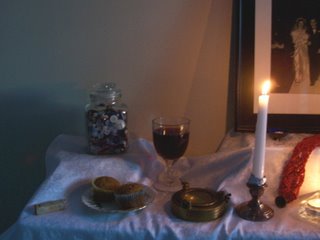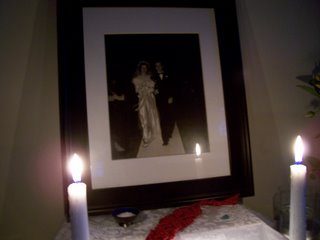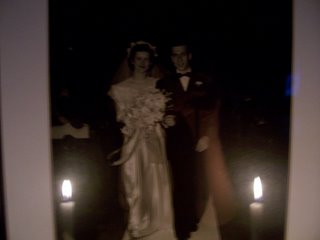Balance: Inuit Stone Constructions
 Inuksuk--Baffin Island
Inuksuk--Baffin Island“…art as a behavior…rests on the recognition of a fundamental behavioral tendency that … I call making special….Reality, or what is considered to be reality, is elaborated, reformed, given not only particularity (emphasis on uniqueness, or ‘specialness’) but import (value, or ‘specialness’)—what may be called such things magic or beauty or spiritual power or significance.
Making special implies intent or deliberateness. When shaping or giving artistic expression to an idea, or embellishing an object, or recognizing that an idea or object is artistic, one gives (or acknowledges) a specialness that without one’s activity or regard would not exist. Moreover, one intends by making special to place the activity or artifact in a ‘realm’ different from the everyday. In both functional and nonfunctional art an alternative reality is recognized and entered; the making special acknowledges, reveals, and embodies this reality.” (Ellen Dissanayake, "What is Art For?")
 Nunavut Territory, Canada
Nunavut Territory, CanadaImagine an island that lies on the Arctic Circle. The land is tundra--no trees grow here. The line between sky and land is sliver thin. For half of the year, the ground is covered by snow and ice fields; in summer, rock slabs, lichen, berries and a few species of wildflowers and grasses emerge. Mountains make up the interior of the island and travel is often limited to the perimeter.
Although the island is the country’s largest island as well as the world’s fifth largest (just under 184,000 square miles), only 11,000 people live here. This is Baffin Island, Nunavut, located in Northeast Canada. Nunavut is the country’s newest territory and a homeland to an aboriginal people known as Inuit. In their native language of Inuktitut, “Nunavut” means “our land.” “Inuit,” plural for “Inuk,” is the Inuktitut word for “human beings.” The Inuit’s ancestors came from Alaska and Siberia approximately 5,000 years ago. Today, 40,000 live within Canada, one fourth of these on Baffin Island.
 Baffin Island_Northeast
Baffin Island_Northeast Baffin Island, NASA
Baffin Island, NASAUntil the last few decades of the 20th century, the Inuit lived on Baffin Island as transient hunters/gatherers mush as their ancestors had for thousands of years. All materials to support life (food, clothing, shelter, etc) came from their immediate surroundings and were their responsibility to acquire directly from the source. However, theirs was not a gentle, generous land; this was the arctic tundra. There was no growing of crops or raising livestock. Literally everything that was eaten had to be either picked or hunted and killed. Clothing was made from caribou hides. Shelter was constructed of caribou hides in summer and ice in winter. Theirs was a culture in which their very survival was at the heart of every action. Furthermore, this survival did not allow for a “solid” home. Hunters must follow the food source and the Inuit had to keep moving to live.
In what seems to be a paradox, the Inuit were deeply attached to this harsh landscape. The land not only gave them life, but to the Inuit elders, “the earth was considered a great living being…(with) places of power and objects of veneration that defined the very soul of the world they knew.”
